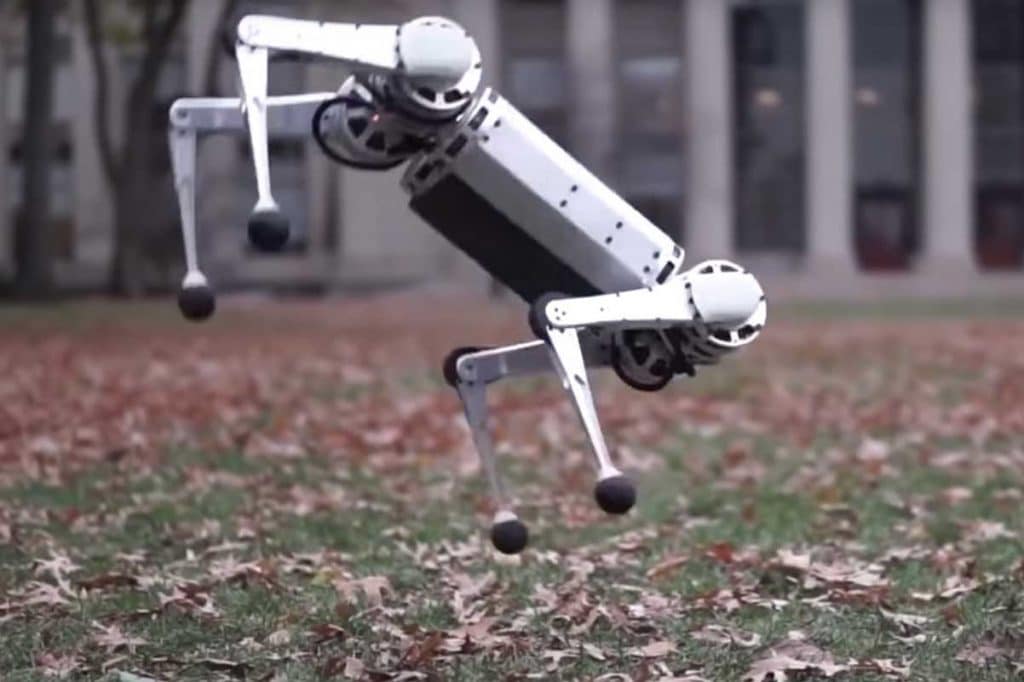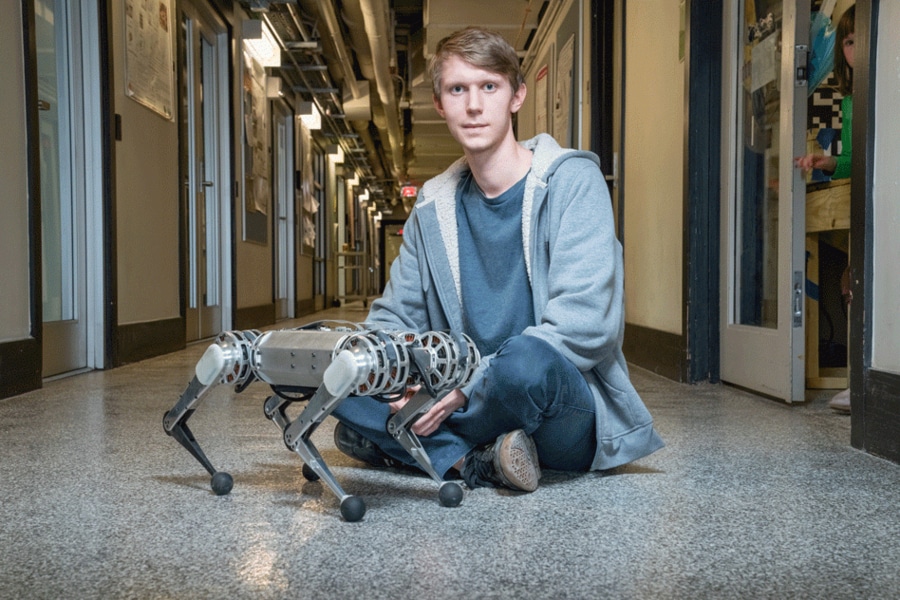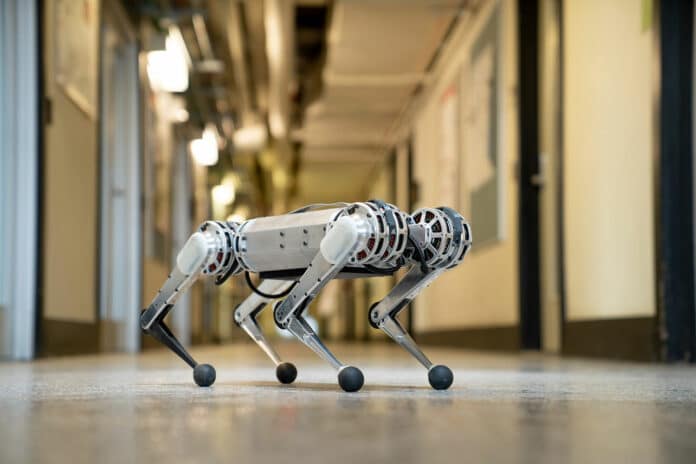Until now, we have seen robots doing a number of impressive things that we never even think of. We saw them climbing stairs while avoiding obstacles, parking cars at the airport, and a lot more.
Now, researchers at the Massachusetts Institute of Technology (MIT) have brought something really interesting. They designed and created a droid named “Mini Cheetah,” the very first four-legged robot able to do a backflip!
MIT’s new Mini Cheetah robot can perform a 360-degree backflip from a standing position and walk either right-side-up or upside-down. Its lightweight and smaller size may be the key element in achieving this ability.
As well as being able to bend and swing its legs wide, the robot can trot over uneven terrain about twice as fast as an average person’s walking speed.

This AI robot dog is a miniature version of MIT’s Cheetah 3 robot and weighs only 20 pounds (9kg). Moreover, when kicked to the ground, the robot can quickly right itself with a swift, kung-fu-like swing of its elbows.
Each of the robot’s legs is powered by three identical, low-cost electric motors that the researchers engineered using off-the-shelf parts. Each motor can easily be swapped out for a new one.
“A big part of why we built this robot is that it makes it so easy to experiment and just try crazy things because the robot is super robust and doesn’t break easily, and if it does break, it’s easy and not very expensive to fix,” says Katz, who worked on the robot in the lab of Sangbae Kim, associate professor of mechanical engineering.
The researchers will present the Mini Cheetah’s design at the International Conference on Robotics and Automation in May.
As gymnastics are a dangerous activity, in case a malfunction or accident happens- each element of the robot is easily replaceable.

“In Cheetah 3, everything is super-integrated, so if you want to change something, you have to do a ton of redesign,” Katz says. “Whereas with the Mini Cheetah, if you wanted to add another arm, you could just add three or four more of these modular motors.”
Three motors give it three degrees of freedom and a huge range of motion. The lightweight, high-torque, low-inertia design enables the robot to execute fast, dynamic maneuvers and make high-force impacts on the ground without breaking gearboxes or limbs.
“When it’s running, its feet are only on the ground for something like 150 milliseconds at a time, during which a computer tells it to increase the force on the foot, then change it to balance, and then decrease that force really fast to lift up. So it can do really dynamic stuff, like jump in the air with every step or run with two feet on the ground at a time. Most robots aren’t capable of doing this, so move much slower,” Technical associate Mr. Katz describes Mini Cheetah’s skillset
For testing, the engineers ran the Mini Cheetah through a number of maneuvers, and the results were great.
The MIT team is also developing another, even higher-impact maneuver.
“We’re working now on a landing controller, the idea being that I want to be able to pick up the robot and toss it and just have it land on its feet,” Katz says. “Say you wanted to throw the robot into the window of a building and have it go explore inside the building. You could do that.”
